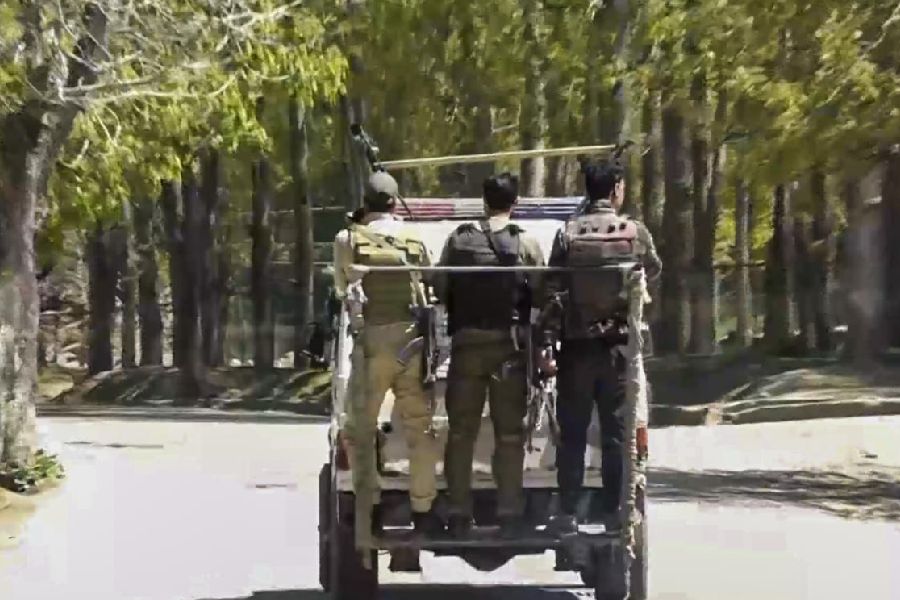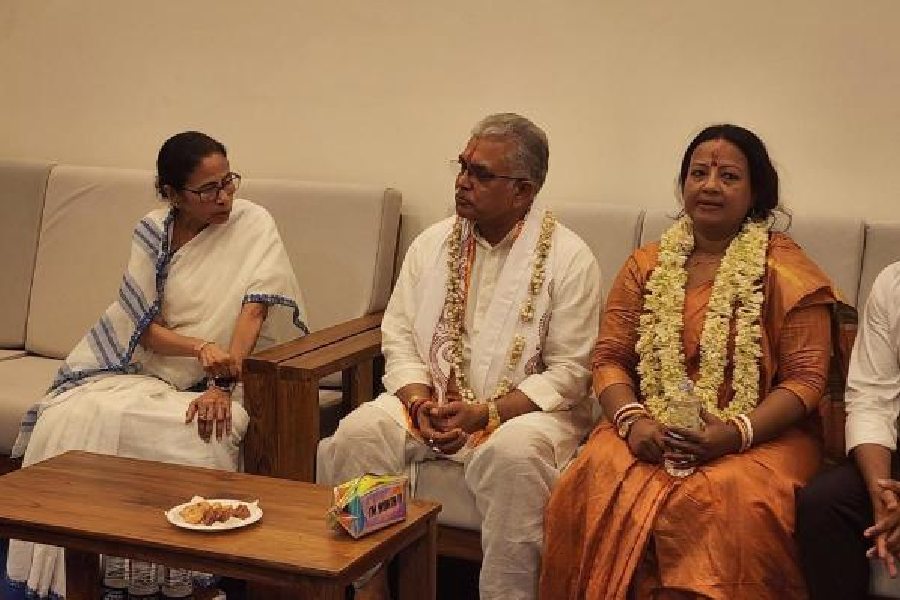Paradip, Nov. 4 :
Paradip, Nov. 4:
The spectre of the century?s worst epidemic looms over this township and other coastal regions in Orissa, ravaged first by the supercyclone and then the floods.
The official death toll today was 904, but with reports of diarrhoea deaths pouring in from different areas, the worst may have only just begun.
The dead and the living are existing side by side, one bloated and putrefying, the other scavenging for morsels lying by its side. Human corpses floating alongside animal carcasses is a common sight here.
At Chunah, 15 km from Paradip, a body has been floating with dead cattle for the past few days but no one has bothered to remove it.
?Who cares? Let it rot there. We don?t have the time to remove it and cremate it,? said G. Darkonda, a fisherman.
?Even street dogs have perished with the cyclone and floods,? says Darkonda, hinting that had they been alive, they could have devoured many of the corpses. Closer to the port town, one does find a handful of surviving dogs feasting on the corpses. ?They are littering the place with the limbs,? said Arun Nayak.
Just opposite Nayabazar Colony Housing Estate in Paradip, 56 corpses were dumped in a heap. Umashankar Paridh, a resident and a local businessman, said: ?If there is hell on earth, it is here.? Residents of the colony have had to put up with this horrible sight for the past few days. ?Even worse is the smell that blows in continuously with the sea wind,? said Paridh.
A couple of days ago, two men were sent by the local administration to light a mass pyre with only five litres of kerosene. The men tried but failed as the kerosene was too little. The result: half-burnt bodies lie scattered in the area.
?The stench is becoming more intense and nauseating. And these are half-baked human corpses. Can you imagine how nightmarish it is?? asked Paridh.
Officials of the Paradip Port Trust admit that the situation is heading towards an environment disaster. ?But we are helpless. We are ready to pay even Rs 500 to anyone willing to dispose of a single corpse. But no one is coming forward,? said Dilip Mishra, a senior official.
Madhuban colony, where port trust employees live, Paradip Phosphate Colony and Brindaban Colony are in no better shape. The areas around these colonies are still waterlogged. With the approaches cut off, the floating bodies cannot be retrieved.
The air is as foul as that of Nayabazar. Even the shoreline is dotted with corpses, said Kamballay, president of the local fishermen?s society. He claimed to have counted at least 18 human bodies during a survey of the seaside.
Ironically, while the slushy land was a scene straight out of hell, the sea at Paradip was a brilliant blue, the waves gently lapping the shore.
?One can hardly believe that this placid sea could unleash such fury,? murmured Devendra Kumar Das, priest of the Hanuman temple on the beach. ?Fortunately, the sea god spared my deity.? The water just stopped short of the altar.
The gods, it seems, will not spare the survivors. The first report of an epidemic outbreak arrived from Nahalpur area in Govindpur. Over a hundred villagers are sick with diarrhoea. Surendra Das and Seuli Sahu died yesterday while scores of others are gasping for life.
The district administrations in Jagatsingpur, Kendrapara, Bhadrak, Cuttack and Bhubaneswar are still struggling to distribute relief. Medical teams and drugs are virtually non-existent.
?I am an MLA of the ruling Congress but I won?t hesitate to say that the government has failed miserably to help the suffering millions,? said Bijoy Nayak of Paradip. ?Food packets air-dropped by helicopters are like a drop in the ocean.?
Areas like Erasama, Kujang, Sana Adhanga, Mahakalapada, Palamunda and Rajnagar remain cut off. People who managed to get out of these places brought tales of horror with them.
With their meagre food stock washed away, thousands of villagers are living on boiled cattle feed and tree roots. They had begun by eating raw vegetables, like papaya, gourd or pumpkin, but even these are exhausted. Coconuts took care of their thirst initially, but very few trees could be found standing upright.
Rescue and relief work are hampered by the shortage of boats, which are the only means of reaching the cut-off areas. The army and the navy have provided some boats, but not enough to help all those in need.
But help may be on the way for Paradip as the port has resumed operations six days after it fell prey to the cyclone. With the navy?s help, some order has been restored to let the first merchant vessel into the port tomorrow morning, an official release said here today.
The navy has held health camps and treated about 2,000 people. About a thousand tonnes of bleaching powder will be sent to purify water.
 Thursday, 01 May 2025
Thursday, 01 May 2025









